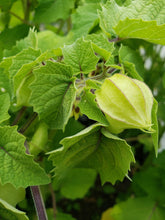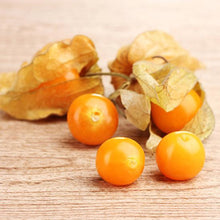50 seeds
Matures in 75 to 90 days.
Companion planting: Basil, Asparagus, Carrot, Onion, Parsley, Pea, Sage, ...
Bad companions: Cabbage family, Fennel, Corn, Potato, ...
Caution: Like almost all Solanaceae (tomatoes, eggplants, potatoes, ...), the leaves, stems, flowers, and even the husk that surrounds the fruit of the Cape Gooseberry are toxic. They should not be ingested.
Cape Gooseberries have a very delicate and subtle taste, sweet and tangy at the same time, worth discovering. Ripe fruits, which resemble yellow cherry tomatoes in a paper husk (yellow calyx), detach from the plant itself and fall to the ground where they continue to ripen; it is essential to pick them regularly.
Sow indoors 8 to 9 weeks before the last ground frost. Cover the seeds with a little soil. If necessary, thin out or transplant excessive plants when they have their first true leaves. They grow quickly, so plan to transplant them into a sufficiently large pot. When all threat of ground frost has passed, plant them outdoors in full sun in rich, well-drained soil. Space them about 45 cm apart. Water as needed since dry periods significantly reduce the quantity and quality of the harvest.
Cape Gooseberry is known to have better cold tolerance than its cousin, the tomato, but you still need to shelter it on colder nights.
Cape Gooseberry is not perennial, but it tends to self-seed if you leave fruits from the previous season lying in the garden. And the plants can be very numerous! Cape Gooseberry has few enemies.




